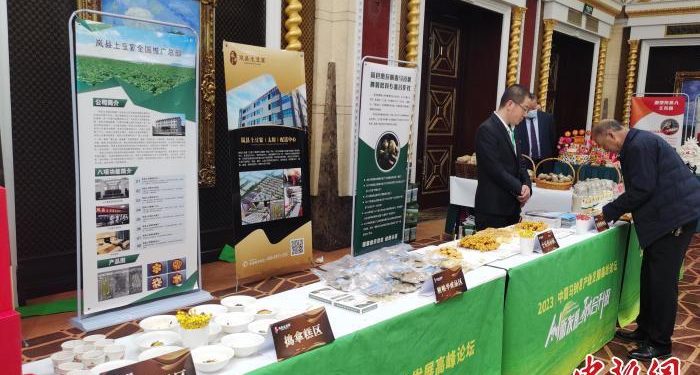#ChinaPotatoIndustry #PotatoTransformation #PotatoUpgrading #AgriculturalInnovation #FoodSecurity
Chinese experts in Shanxi province provide valuable insights and recommendations for the transformation and upgrading of the potato industry in China. The 2023 China Potato Industry Development Summit Forum held in Taiyuan, Shanxi, focused on the future prospects and directions of the potato industry, including breeding, research and development, processing, and marketing. The forum aimed to enhance the overall operation of the potato industry chain, address existing challenges, and provide intellectual support for the industry’s development. This article discusses the expert opinions and their proposed strategies to overcome the shortcomings and foster high-quality development in China’s potato industry.
The 2023 China Potato Industry Development Summit Forum took place in Taiyuan, Shanxi, attracting renowned experts and industry professionals. Chief Scientist of the National Modern Agriculture Potato Industry Technology System and Researcher at the Institute of Vegetables and Flowers of the Chinese Academy of Agricultural Sciences, Jin Liping, emphasized the importance of future green and high-quality development in the potato industry.
Experts participating in the forum focused on discussing the development prospects and directions of the potato industry, covering various aspects such as breeding superior varieties, research and development, advanced processing, and efficient logistics and marketing. They aimed to explore innovative operational models for the entire potato industry chain, align potato supply with market demand, and provide the necessary intellectual support to drive the industry’s growth.
Identifying the existing shortcomings in the potato industry, Jin Liping highlighted several key challenges. These include a lag in innovation within the seed industry, lack of innovation capacity and motivation among enterprises, unfavorable cultivation conditions and low productivity in major production areas, and a meager processing conversion rate of only 10%.
To overcome these challenges and lay a solid foundation for high-quality development in the potato industry, Jin Liping proposed a comprehensive approach. This approach involves prioritizing scientific and technological innovation, market-oriented strategies, and enhancing the role of enterprises as primary drivers. Additionally, diversifying investment mechanisms, increasing research and development investment, and integrating potato seed industry innovation into national scientific plans are recommended. Encouraging enterprises and society to contribute, promoting collaborative breeding programs, and establishing a new mechanism that combines the needs of China’s potato seed industry with academia, industry, and research institutions are also crucial. These measures will consolidate the innovation advantages of research institutions, enhance enterprise innovation capabilities, and facilitate the creation of collaborative innovation platforms for germplasm exploration, bio-breeding technology research and development, and the development of major new varieties. Ultimately, this will strengthen China’s independent innovation capacity in the potato seed industry.
Moreover, during the keynote report on “Global Potato Production Patterns and Prospects, as well as the Development Trends of China’s Potato Industry,” former Deputy Director of the International Potato Center, Lu Xiaoping, stated that the potato industry’s future growth would primarily occur in Asia and Africa. Lu highlighted the mature and stable markets of Europe and America, where frozen potato products dominate consumption while fresh potato consumption remains relatively low. In the long term, Asia, particularly China and India, and Africa are expected to become the main growth areas for the potato industry.
In response to the development of China’s potato industry, Lu Xiaoping emphasized adopting a “large food” perspective. In addition to enhancing breeding and seed industry efforts, the focus should be on sales and consumption. By driving production through consumer demand.
Luo pointed out several key challenges faced by the potato industry, including inadequate utilization of improved varieties, intensifying competition, increased machinery requirements coupled with a lack of suitable small-scale machinery, and a lack of coordination and integration along the industry value chain. To address these challenges, he emphasized the importance of recognizing the unique characteristics of this new stage, adopting a problem-oriented approach, and focusing on the goals of “high quality, high efficiency, high value, and high safety.” He further suggested constructing a strategic framework for high-quality development of the potato industry, centered around technology, production, industry, management, and policies, to accelerate its transformation and upgradi and considering local conditions, timely adjustments, and market demands, the aim is to expand production, increase overall potato production, alleviate pressure on traditional staple food production, strengthen nutrition education, develop more processed products, improve quality and efficiency, and establish Chinese potato brands. These efforts will contribute to China’s self-sufficiency in food production and positively impact the nation’s grain industry.








